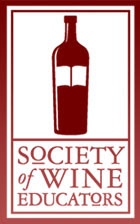 I run into this issue every year, when the holidays bring in new faces and new customers. It is an issue I have a harder time dealing with as I get bombarded more and more with new wineries, grape varieties and wine regions. The issue is “name recognition.” In other businesses, I understand this because if you are looking for a tractor, you first look at John Deere, if you are looking for soda, Coke or Pepsi, I get the whole brand recognition thing – but when it comes to wine, the days of old (Robert Mondavi, Silver Oak, Caymus, Cakebread) doesn’t really hold my attention anymore, and I wonder why it still does with the average consumer. Not to bash or bang on those brands or any other, but with hundreds of thousands of incredible wineries out there, how can you just focus in on these?
I run into this issue every year, when the holidays bring in new faces and new customers. It is an issue I have a harder time dealing with as I get bombarded more and more with new wineries, grape varieties and wine regions. The issue is “name recognition.” In other businesses, I understand this because if you are looking for a tractor, you first look at John Deere, if you are looking for soda, Coke or Pepsi, I get the whole brand recognition thing – but when it comes to wine, the days of old (Robert Mondavi, Silver Oak, Caymus, Cakebread) doesn’t really hold my attention anymore, and I wonder why it still does with the average consumer. Not to bash or bang on those brands or any other, but with hundreds of thousands of incredible wineries out there, how can you just focus in on these?Obviously, it is a question of awareness, and knowing that these juggernauts are still brands that the general wine-buying public know very well, regardless of what else is in the market. Yet I am sure I speak for most of the wine retailers out there when I say that for every “marquee” brand there is at least 10 to 20 wines of similar or surpassing pedigree, and more often than not, anywhere from 20% to 50% cheaper than those marquee brands.
Still, they want a brand that their guests, friends, etc. will recognize. It yields an interesting conundrum in that so many of us bloggers decry the magazines for exerting too much power and emphasis on wine scores – and these scores supposedly drive sales, right? One winery in particular I have complained about several times here at UTGT, I have people walk into my store every day and ask for this brand, yet I can honestly rarely get. These wines for the most part, get panned by the critics, getting scores in the high 70s and low 80s, and still people want the wines. It’s the name. Granted the wines of this producer are good wines, but to me, why should I charge $50 for a Chardonnay that I should be selling for under $20 – and I can easily recommend a dozen under $20 Chardonnays from Napa or Sonoma or Santa Barbara that in my mind, are better in every way than this producer, and I can get them without any degree of difficulty, and customers can come back for them at any time they choose. I am not singling out any one brand by any means, I am just using them as an example. But there are dozens of wineries that charge too much, produce too little, are almost completely obsessed with being in restaurants-only, and rely too heavily on their past glories of marquee status, while there is an infinite wealth of up-and-coming wineries that offer customers value and quality, and will go much further to impress your wine geek friends, whether at a party, for a gift, or with dinner.
It is a continuous source of frustration, not to be able to put a great value in a customer’s hands. Often times I find myself a bit jaded toward these marquee brands – the sales reps for these wines usually come off as stuffy, self-absorbed and unwilling to admit their wines are overpriced. One winery rep in particular visited our store a few years back, and was pissed we were selling their Napa Cab for nearly $10 under the National average. I told him we couldn’t sell it at the price we had it in the kind of volume he was looking for – just how much volume can you generate for a $70 Napa Cab anyway? – and the visit went downhill from there.
There are wines we won’t get access to because of where we are in the country – Kentucky – and where we rank in the general scheme of the wine business – at the very bottom. Shafer, Pride, Peter Michael, Harlan – you can pretty much forget about those guys. I find myself laughing some hysterically disturbing laugh whenever Shannon or one of my wine staffers ask if any of those are available. I laugh mostly due to our proximity to Cincinnati – we are considered part of the Greater Cincinnati metropolitan area, separated only by the Ohio River – so I find myself staring over the flood wall, looking at Carew Tower (Cincy’s tallest building – right now), and thinking “what would it take for Northern Kentucky to secede to Ohio?”
Overall, those marquee brands do more to piss me off than anything else. I usually only give them shelf space and attention in December, choosing to spend my time promoting wines that seemingly want to be sold to the masses, wines that would like to find a home on as many retail shelves as possible. I get the whol supply vs. demand thing – some of these wines are just not mass-produced. I get that and appreciate that. Yet if it is available to our competition in Ohio, it should be here in Northern Kentucky. Our customers are the same customers that frequent stores across the river – we share the same metropolitan boundaries for crying out loud. My only wish in this industry is that consumers who shop for these marquee brands begin to realize the degree of difficulty in getting many of these brands, the sometimes diminished quality of these brands, and the presence of so many alternatives to these brands.
In looking at the glass half-full, I should be thankful that people are coming into the stores wanting to spend money – and believe me, I am. Extremely. I guess it is the knowing that there is far more than just a few marquee brands out there in the wine world. I want the world to see them, try them, and enjoy them as I do.











No comments:
Post a Comment